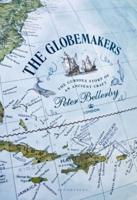Publisher's Synopsis
This historic book may have numerous typos and missing text. Purchasers can download a free scanned copy of the original book (without typos) from the publisher. Not indexed. Not illustrated.1856 Excerpt: ... HONDURAS. CHAPTER IV. DISCOVERT BOUNDARIES GENERAL ASPECT TOPOGRAPHY, ETC. TT was in Honduras that Columbus first planted his feet on the continent of America. In 1502, then sailing on his fourth voyage, he discovered the island of Guanaja (or Bonacca), which he named the Isle of Pines. From this island he descried to the southward the high mountains of the main land, and, pursuing his course in that direction, on the 14th of August landed at a point which he called Punta de Casinas (now Cabo de Honduras), and formally took possession of the country on behalf of the crown of Spain. He subsequently coasted to the eastward, touching at the mouth of Rio Tinto, or Black River, and finally, after great delays and dangers, reached a point where the coast, abruptly trending to the southward, formed a cape, to which, in gratitude for his safety, he gave the name of "Cabo Gracias d Dios" Cape Thanks to God. He lost a boat, with some sailors, in attempting to enter the Great Cape or Wanks River, which was, in consequence, called Rio del Desastre. From Cape Gracias he continued his voyage along what is now the Mosquito Shore, called by him Cariay, to the Isthmus of Darien. Less than twenty years afterward, the conqueror of - 60 Republic Of Honduras. chap. IV. Mexico, Hernando Cortez, inspired by the accounts of vast and populous kingdoms to the southward of the prostrate empire of Montezuma, undertook an expedition into Honduras, which at this time was called Hibueras or Higueras. This expedition, both for its length, and the difficulties which were encountered and overcome in its prosecution, stands, and will forever stand, unprecedented and unapproachable in the history of martial adventure. Starting from the Isthmus of Tehuantepec, Cortez boldly entered the va..."









